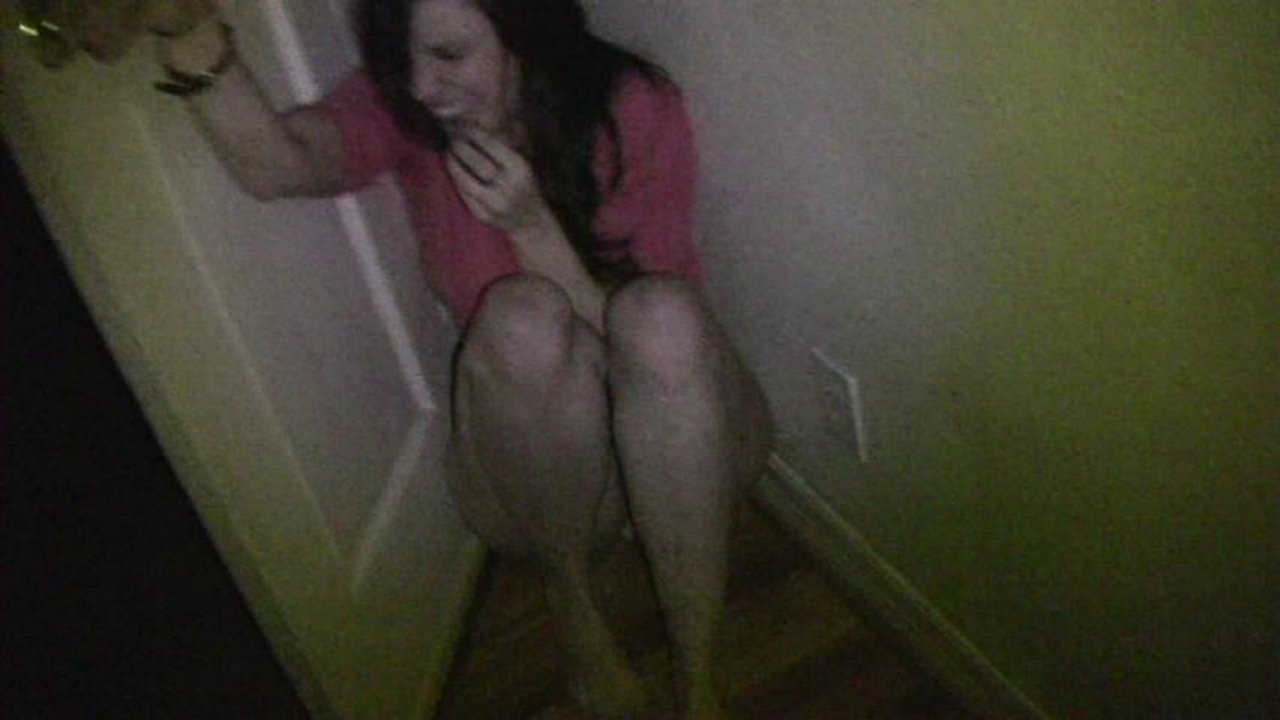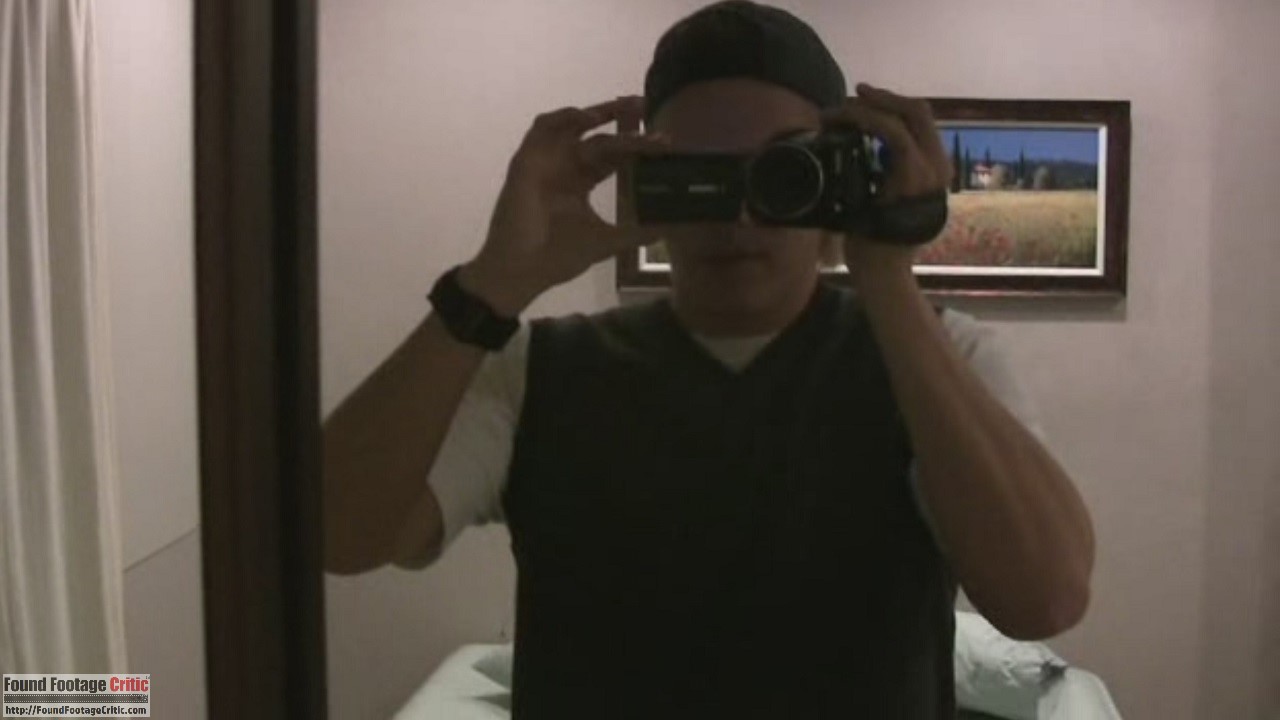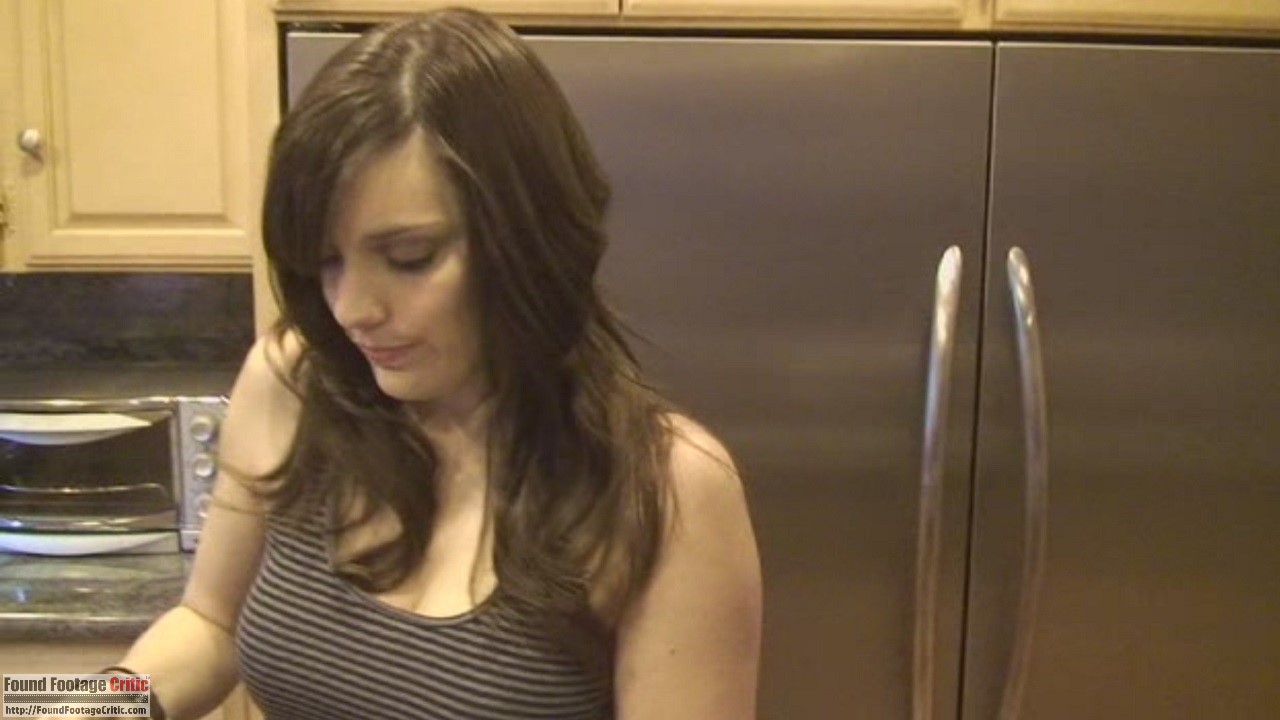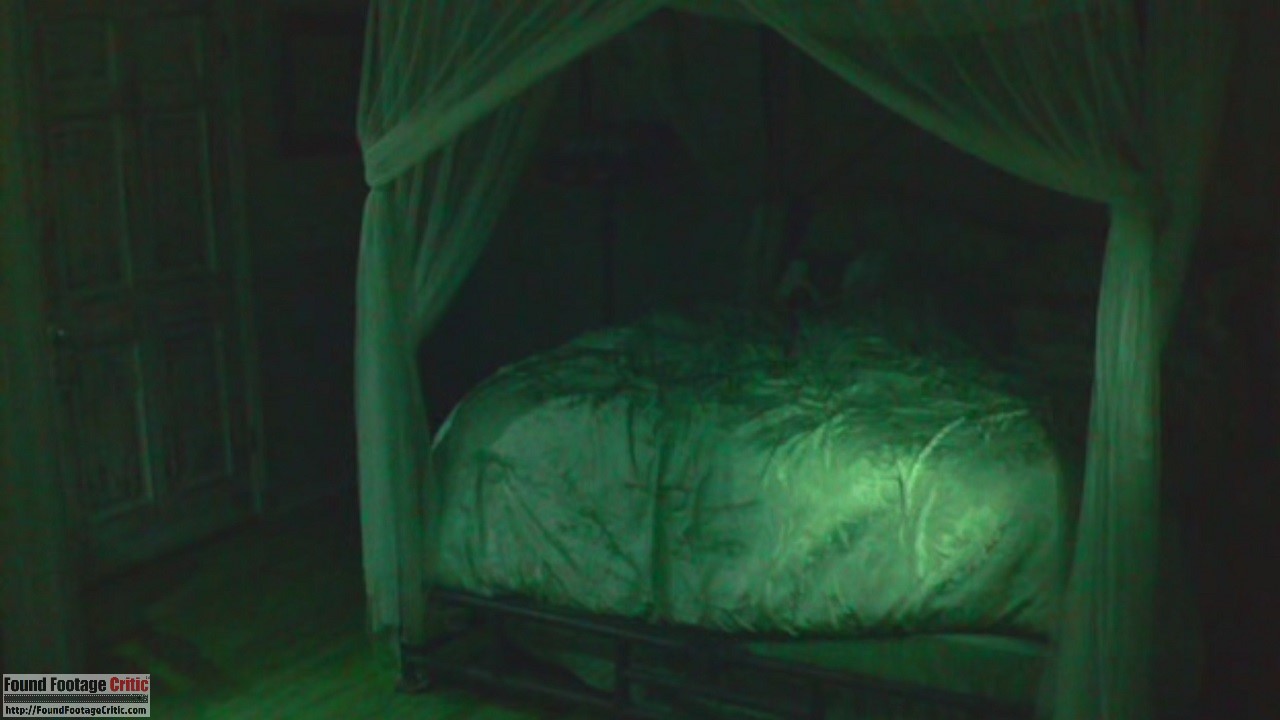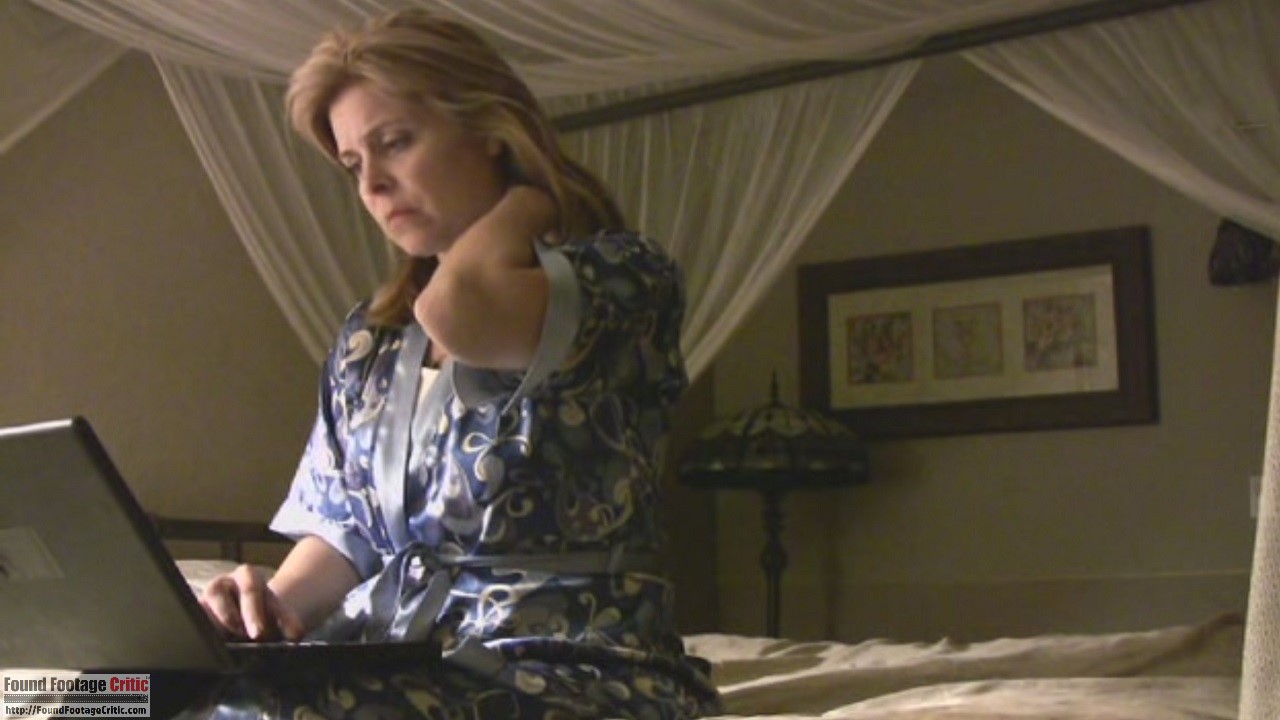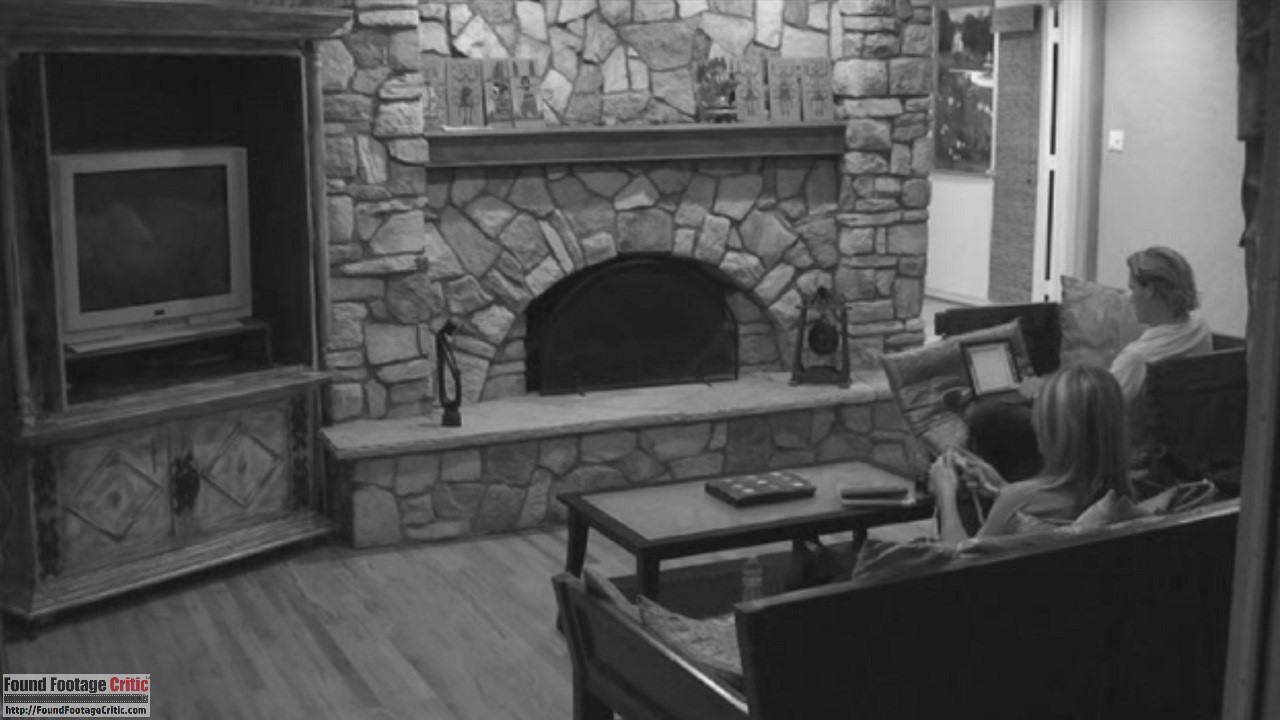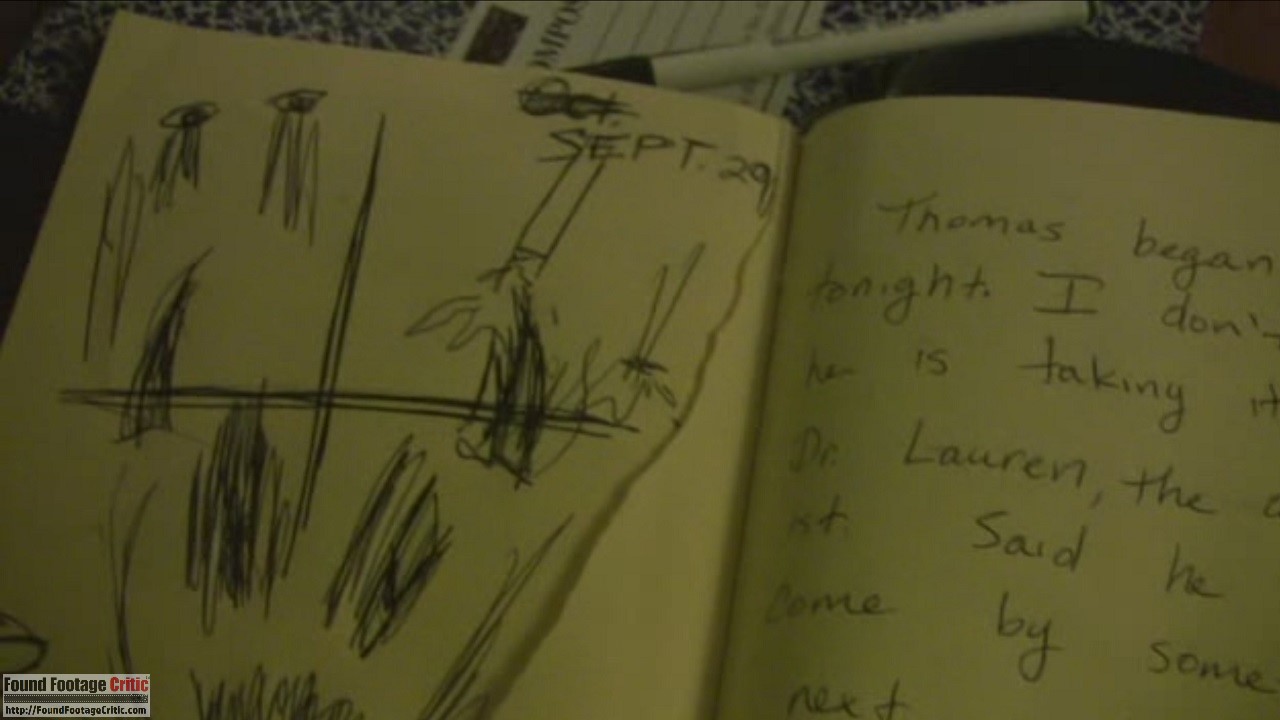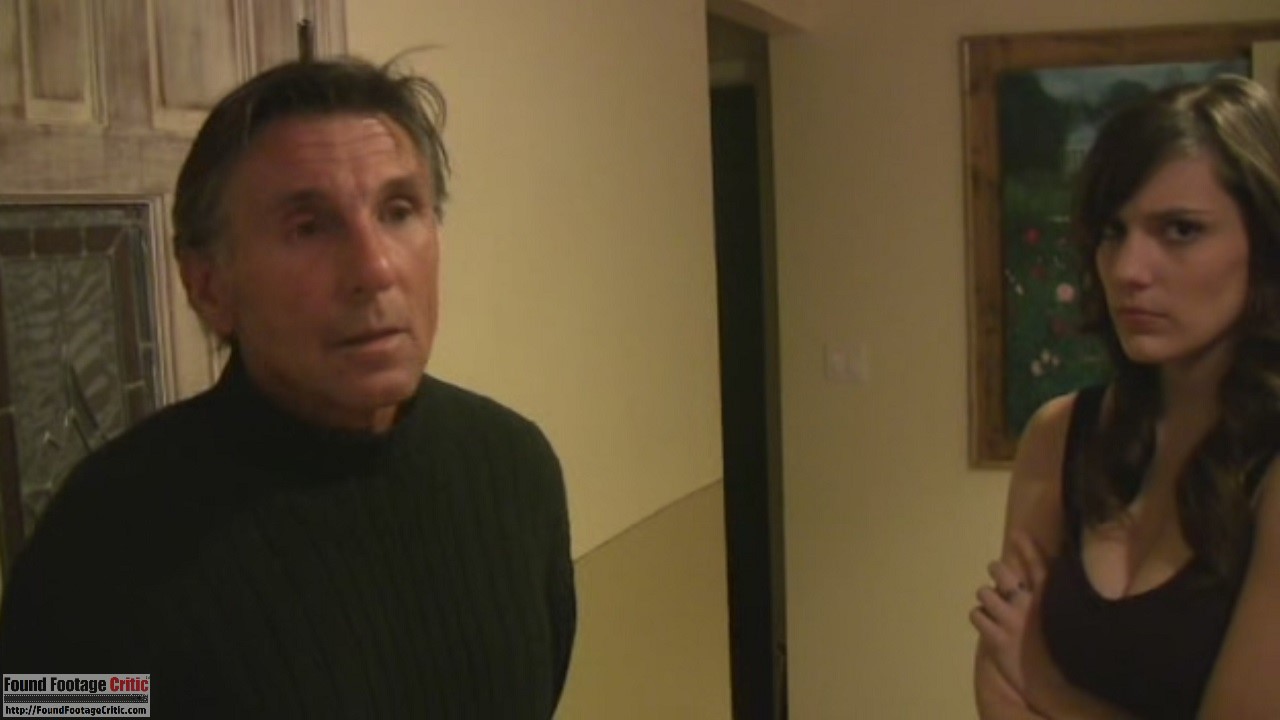Paranormal Entity is a found footage supernatural horror film written and directed by Shane van Dyke and produced by The Asylum. The film follows a family plagued by an unseen malevolent entity.
Independent film company and distributor The Asylum gained notoriety for producing and distributing micro-budget B movies, including a library of mockbusters: similarly titled and themed movies quickly churned out to cash-in on popular films.
Previous Asylum mockbusters include Transmorphers (2007) cashing in on Transformers (2007), Sir Arthur Conan Doyle’s Sherlock Holmes (2011) for Guy Richie’s Sherlock Holmes (2011), with the addition of dinosaurs and cyborgs, and the previous found footage flick Monster (2008) in response to Cloverfield (2008).
As is obvious from the title, Paranormal Entity is Asylum’s answer to Paranormal Activity (2007), released direct-to-DVD only four months after Paranormal Activity (2007) was released in theaters and before it came out on DVD.
The Asylum gained notoriety for producing and distributing micro-budget B movies, including a library of mockbusters
The plot centers on the Finley family, made up of young adult siblings Thomas and Samantha and their mother Ellen, who recently lost their father and husband. As the story opens, the Finleys were advised by a psychic to record evidence of the strange phenomena occurring in their home, centered on Samantha. Thomas decides to film as much evidence as possible, including setting up surveillance cameras in Samantha and Ellen’s rooms.
Writer/director/star Shane van Dyke has worked with The Asylum before, writing mockbusters such as The Day the Earth Stopped (2008) and Transmorphers 2: Fall of Man (2009). In an interesting turn, Shane van Dyke went on to write the horror film Chernobyl Diaries (2012) along with van Dyke’s brother and Paranormal Activity (2007) creator Oren Peli. As an additional bit of trivia, Shane is the grandson of the legendary Dick van Dyke and part of the van Dyke show business dynasty.
As with Paranormal Activity (2007), The Asylum decided to turn Paranormal Entity into a series, though in this case the sequels share no characters or continuity with the original, aside from being shot in found footage format and featuring ghosts. The psuedo-series includes 100 Ghost Street: The Return of Richard Speck (2012) (a.k.a. Paranormal Entity 4).
Comparison to Paranormal Activity
Any found footage haunted house movie post-2007 will find itself compared with Paranormal Activity (2007), whether fairly or not. Paranormal Entity, though, is a directly piggybacks off of Oren Peli’s ground-breaking found footage classic. Comparisons and contrasts between the two, therefore, are inevitable and enlightening.
Paranormal Entity is genuinely on par with Paranormal Activity
Paranormal Entity and Paranormal Activity (2007) share many similar plot elements: a man decides to film evidence of paranormal events occurring in his home, centered on a female loved-one; a paranormal expert who could have helped them is unavailable at critical moments; the characters relocate to a motel, but the entity follows them; the haunting force is revealed to not be a ghost, but a far more malevolent creature. And the similarities do not stop here—astute viewers of both films will find that the minutiae of Paranormal Entity closely shadows Paranormal Activity (2007).
Thomas, as the primary cameraman, shares similarities with Micah. Both are obsessed with capturing evidence of the supernatural and are initially obnoxious, but revealed to care deeply for the people in their lives. Like Micah, Thomas has to be shouted into turning off his video camera, though at least Thomas hasn’t been told that filming the demon will only enrage it. Thomas also never does anything comparable to Micah protesting that he didn’t buy a Ouija board, like Katie forbid him to, he borrowed it. The female lead of Paranormal Entity, Samantha, even bears a superficial physical resemblance to Katie: both attractive, large-chested brunettes with dark, expressive eyes.
Asylum mockbusters are famously less-than-stellar copies of their inspirations. Surprisingly, in this case, Paranormal Entity is genuinely on par with Paranormal Activity. If one were to watch Paranormal Entity and Paranormal Activity (2007) back-to-back, it would be difficult to guess which film was the original and which was the copy. In a way, it’s unfortunate that Paranormal Entity is so linked with Paranormal Activity (2007), as the movie is good enough to stand on its own and be judged on its own merits. At the same time, Shane van Dyke and The Asylum have somewhat brought this on themselves in so blatantly attempting to ride Oren Peli’s coattails right to the bank. This review attempts to judge Paranormal Entity as its own (apologies) entity, but comparisons are still unavoidable.
Filming Reason
Thomas initially has a strong reason for filming—namely, to document the strange events occurring around his house, specifically to his younger sister. The expert Thomas consults recommends that he capture evidence of any paranormal, well, activity, though not explicitly on camera. Thomas carries one video camera around with him and sets up three surveillance cameras on tripods in Samantha and Ellen’s bedrooms and the living room. Thomas is unemployed, and therefore has ample time to record, and is enthusiastic to capture evidence of the paranormal. His motivations (boredom and curiosity) are similar to those of Micah in Paranormal Activity (2007). In both cases, the development of the characters justifies their continued filming. Unlike Micah, Thomas has been given no indication that filming the demon will aggravate it, making him even more likely to keep filming than Micah.
As is sadly the case with many found footage films, the filming justification falls apart at the climax. In this case, the filming reason fails in the final minute or so in which it becomes distractingly implausible that Thomas would continue to hold his video camera given the intense stress, danger, and otherworldly circumstances thrust upon him. Thomas is terrified, concerned for his sister’s life, is in immediate danger, and has no reason to still care about capturing evidence.
Similarly, in an earlier scene, the family is terrified and running through the house, but the level of danger never reaches the point where Thomas’s desire to record evidence—something he believes will help his family—would necessarily be overridden by his sense of self-preservation.
Found Footage Purity
The format of Paranormal Entity borrows from Paranormal Activity (2007), featuring opening and closing explanatory text and periodic title cards indicating the day number. In both films, these on-screen elements are explainable as having been added by a third party subsequently editing the footage. In all, Paranormal Entity maintains strong found footage purity throughout. All footage used in the film originates from either Thomas’s handheld video camera or the three surveillance cameras.
Paranormal Entity utilizes an editing technique some viewers may find obtrusive. During specific scenes featuring a suspenseful event, one video camera displays the event, while a second video camera displays the characters reacting to the off-camera event. While this tactic creates tension and doesn’t excessively challenge the suspension of disbelief, the approach does draw undue attention to itself. The same challenge presents itself in several of the Paranormal Activity sequels which include multiple video cameras. In a small way, Paranormal Entity actually exceeds Paranormal Activity (2007) found footage purity by not choosing to crib the famous time-lapse sleeping scenes.
Realism/Immersion
The supernatural action in Paranormal Entity is more blatant and vivid than that in Paranormal Activity (2007), effectively raising the bar for suspension of disbelief. Overall, the film reaches that bar in how naturalistically the events are presented and the actors’ believable reactions.
Asylum productions are notorious for poor special effects. The effects in Paranormal Entity, however, are fairly top-notch
Paranormal Entity raises nagging questions at the corners of the plot, specifically what each of these characters do when they are not dealing with otherworldly intrusions. The story mentions that Thomas is unemployed, explaining why he can spend so much of his time filming. The film does not address whether Ellen or Samantha have jobs or are in school, as they also seem to spend most of their time in the house. Paranormal Activity (2007) at least added the quick explanation of Micah being a day-trader, while Paranormal Entity brushes this off to focus on the central plot.
Where there are only two obvious effects scenes in Paranormal Activity (2007) (one of them just Katie being pulled out of the bedroom), there are several in Paranormal Entity. Asylum productions are notorious for poor special effects. The effects in Paranormal Entity, however, are fairly top-notch—due in part to the careful distribution of effects shots, the masking effect of found footage cinematography, and the use of practical effects. Unfortunately, no special effects person or makeup artist is credited on IMDb. Like the ersatz sequel 100 Ghost Street: The Return of Richard Speck (2012) and some other found footage movies, Paranormal Entity elects not to include credits. This reviewer would like to know if the effects experts in Paranormal Entity are Asylum regulars, or if they’ve worked on any high-profile productions.
Cinematography
The cinematography is overall standard for found footage, and solid throughout. The film uses a combination of handheld and surveillance video cameras and makes good use of both, apart from the moments of clumsy editing described earlier.
The film believably conveys that the character of Thomas should be capturing the footage
As is a mark of most quality found footage films, Paranormal Entity effectively uses offscreen space. In one particularly good scene, a surveillance camera filming Samantha sleeping is shoved to the side (presumably by the demon), blocking the view of Samantha. This technique leaves the viewer to imagine what awful thing is happening that they’ve been shut off from. This scene is interesting as a horror technique unique to found footage.
Generally speaking, in found footage, the viewer’s point of view is controlled by forces within the story. The viewer is vicariously inserted into the action on a visceral level, creating a vulnerability that is absent in traditional narrative filming. The villain or some unknown force taking control of the video camera produces an unsettling effect. The viewer is placed at the mercy of this possibly malevolent agent, unsure of what it will hide from them or force them to witness.
The image quality is noticeably poorer than that in Paranormal Activity (2007). In the case of Paranormal Entity, the inherent micro-budget nature of Asylum films works in the film’s favor. The footage never looks “cinematic” in the Hollywood sense. The film believably conveys that the character of Thomas should be capturing the footage. Alik Konstantakopoulos is credited as cinematographer, though Shane van Dyke is actually holding the video camera throughout. Unfortunately, Konstantakopoulos has apparently never worked on another found footage film since, as he clearly understands the format.
Plot
The tension and scares throughout the film are enough to maintain audience investment
Paranormal Entity takes a gamble in revealing the ending—that Samantha dies and Thomas is convicted for killing and raping her—in the first few seconds. Shane Van Dyke makes the assumption that he can maintain interest by slowly revealing how the resolution occurred. This risk pays off. In a classic example of dramatic irony, knowing the ending adds an atmosphere of impending doom to even slow scenes. Minor plot elements take on added importance in light of what the audience knows, including the offscreen presence of the paranormal expert and the hints of incestuous subtext between Thomas and Samantha. The tension and scares throughout the film are enough to maintain audience investment.
Paranormal Entity has arguably more plot that Paranormal Activity (2007), with the added subplot of the family dealing with the loss of their father. The titular entity in Shane van Dyke’s film is slightly more developed than that in Oren Peli’s—it has a name and an explanation of how it came to haunt this particular family. Both films wisely choose to keep the motivations and the nature of the demon largely vague.
The titular entity in Shane van Dyke’s film is slightly more developed than that in Oren Peli’s
(Warning for discussion of sexual assault)
One major difference between the two films is the sexual element incorporated into Paranormal Entity. Unlike the demon’s fixation on Katie in Paranormal Activity (2007), the titular entity’s fascination with Samantha in Paranormal Entity is explicitly sexual, culminating in a violent rape either at the hands of a possessed Thomas or some even more disturbing means. It is obvious that this added element is primarily intended for shock value. Surprisingly, however, the treatment of the subject is not callously exploitative. Most of the assaults are not shown on-screen, while Samantha’s trauma is emphasized. Even a scene of the beautiful Erin Marie Hogan (Samantha) topless is disturbing rather than eroticized. While the sexual predation of the demon (which has obvious metaphorical parallels to corporeal abuse, including the doubt Samantha receives when she opens up about what is happening to her) is intended to provoke morbid titillation, it overall doesn’t fall into excessively trivializing the subject.
As might be expected from the studio behind the Sharknado saga, there is considerably more action in Paranormal Entity than in its progenitor. Paranormal Activity (2007) exhibits a polished restraint throughout, withholding intense action until the very end, relying primarily on the fear of the unseen to maintain tension, and leading to one of the most effective and well-earned jump scares in horror. That is not to say that Paranormal Entity is incapable of subtlety and suspense. Compared to Paranormal Activity (2007), though, Paranormal Entity follows the structure of a traditional horror film.
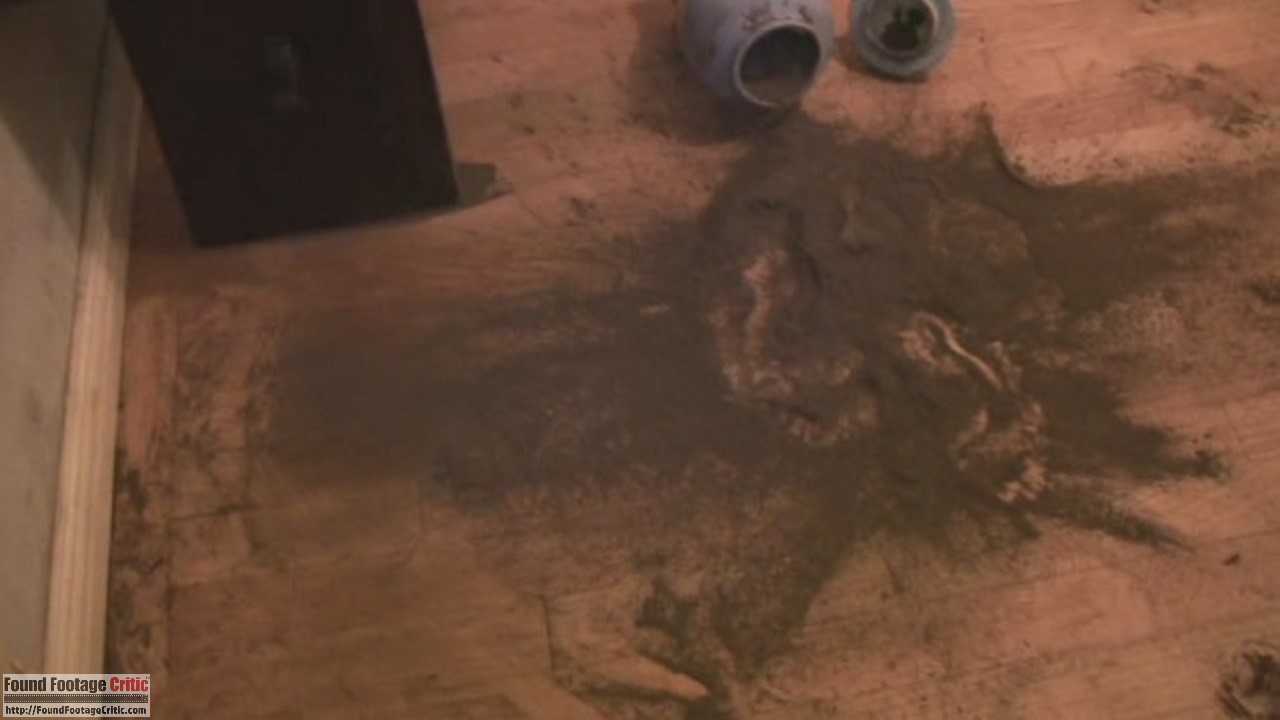
Acting
The acting in Paranormal Entity is overall quite good, with some standout performances. Far less of the dialogue in Paranormal Entity was improvised than that in Paranormal Activity (2007), where Katie Featherston (Katie) and Micah Sloat (Micah) improvised almost everything. Still, the performances come across as naturalistic for the most part, in spite of a few moments of stilted dialogue. In particular, Dr. Lauren (Norman Saleet), the psychic, is a paper-thin character who exists only to dump exposition. The bland but not egregiously wooden performance is the weakest in the film, but given the material Normal Saleet had to work with, his acting is not at fault.
The best performance in the film comes from Fia Perera (Ellen). Playing a grieving wife, frightened for her children, pushed to the brink with stress, and questioning her own sanity, Fia Perera handles scenes of intense emotion, screaming and crying, without becoming melodramatic. Surprisingly, Fia Perera’s primary job is as a comedian, also having written and starred in a variety of online short films—her performance in Paranormal Entity proves that she can easily succeed in dramatic acting.
Scream queen Erin Marie Hogan’s (Samantha) performance is natural, capable of conveying the subtleties of a young woman in the midst of a horrible trauma, and holding back the worst from her family. However, her more understated scenes occasionally verge into somewhat wooden acting. Her storyline begs a comparison between the entity’s sexually-charged fixation on Samantha and the experience of a woman suffering sexual abuse, a subtext Hogan handles with subtlety. Erin Marie Hogan appeared in numerous B-horror movies, but, like Fia Perera, deserves the opportunity to prove herself in more mainstream films and television.
The acting in Paranormal Entity is overall quite good, with some standout performances
Shane van Dyke (Thomas), as the cameraperson character, does not spend much time on camera. On a practical level, this approach may be a tactic to avoid revealing that the actor is much older than his character is meant to be; though, to be fair, Shane van Dyke’s age is not too obvious in the short time he spends on screen. He makes good use of his limited presence, balancing an intentionally slightly obnoxious character with Thomas’s genuine concern for his family, especially his sister. As an actor, Shane van Dyke mostly appeared in The Asylum movies, many directed by himself, in addition to a recurring role on Diagnosis: Murder.

